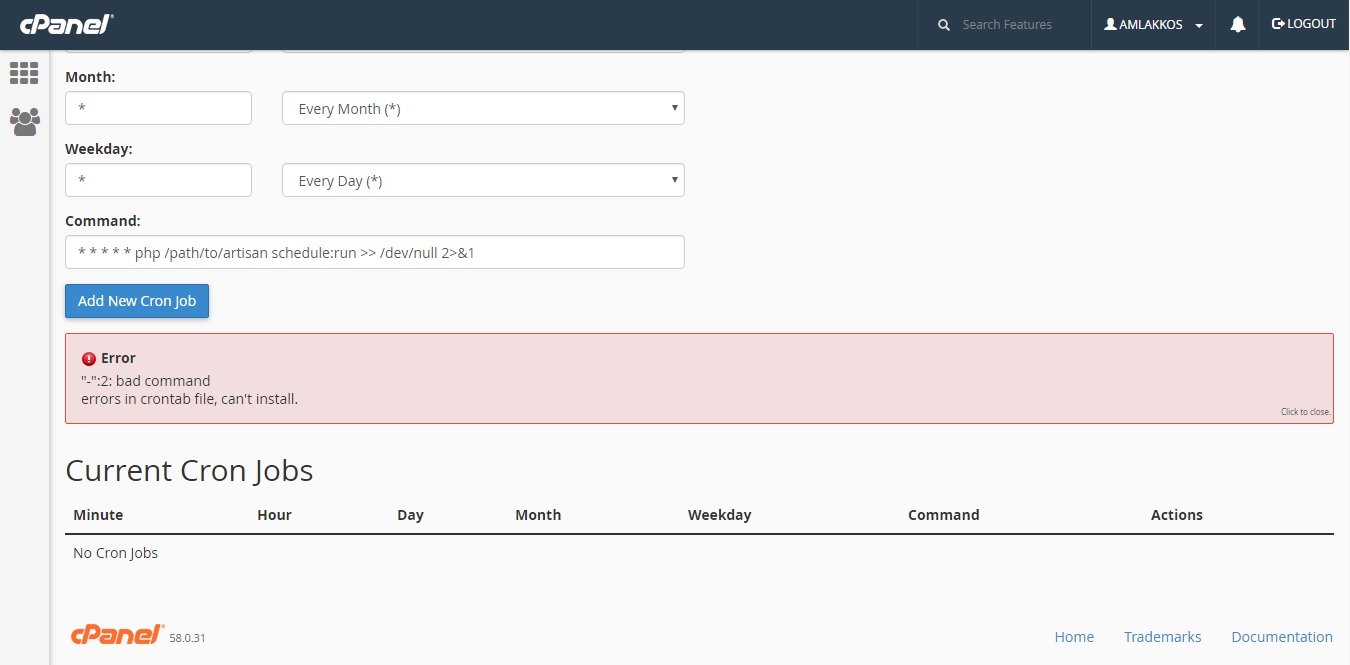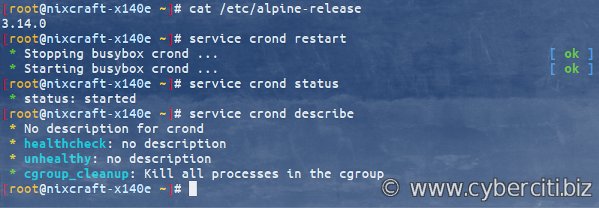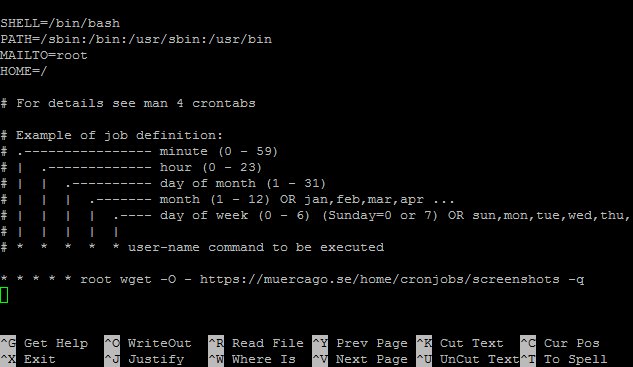If you’re looking for a straightforward solution to restart crontab, you’ve come to the right place. Restarting crontab can be a simple yet essential task to ensure the smooth running of scheduled tasks on your system. In this blog article, we will guide you through the process, step by step, so you can quickly get your crontab up and running again. So, let’s dive in and explore how to restart crontab effortlessly.
Restart Crontab: A Comprehensive Guide
Managing scheduled tasks is a crucial aspect of system administration. Crontab, the time-based job scheduler in Unix-like operating systems, allows you to automate repetitive tasks. However, there may be instances where you need to restart or reset crontab for various reasons. In this article, we will delve into the intricacies of restarting crontab and provide you with a step-by-step guide to ensure a seamless process.
Understanding Crontab
Before we dive into restarting crontab, let’s take a moment to understand what crontab is and how it functions. Crontab is short for “cron table” and is a configuration file that contains entries specifying commands to be executed at specific time intervals. These entries are known as cron jobs. The cron daemon constantly checks the crontab file and executes the specified commands according to the predefined schedule.
Crontab allows system administrators to automate repetitive tasks, such as backups, log rotations, and system maintenance, without the need for manual intervention. It provides a convenient way to schedule tasks and ensures they are executed at the desired time.
Reasons for Restarting Crontab
There are several scenarios where restarting crontab becomes necessary. Let’s explore some of the common reasons:
- Configuration Changes: When you make changes to the crontab file, whether it’s adding, modifying, or removing cron jobs, you need to restart crontab for the changes to take effect.
- System Reboot: After a system reboot, crontab needs to be restarted to resume executing the scheduled tasks.
- Troubleshooting: If you encounter issues with cron jobs not running as expected, restarting crontab can help resolve the problem. It refreshes the cron daemon and ensures any misconfigurations or errors are cleared.
- Software Updates: When you update the cron software or associated components, restarting crontab may be required to activate the new changes.
Restarting Crontab on Linux
Now that we understand the importance of restarting crontab let’s explore how to do it on a Linux system:
- Open a terminal window or connect to your Linux system via SSH.
- Identify the user whose crontab you want to restart. By default, each user has their own crontab file.
- Use the following command to restart crontab for the specified user:
sudo service cron restart
Executing this command will restart the cron service, refreshing the crontab entries for the user specified.
Alternative Method: Using Systemctl
If your Linux distribution uses systemd as the init system, you can also use the systemctl command to restart the cron service. Follow these steps:
- Open a terminal window or connect to your Linux system via SSH.
- Identify the user whose crontab you want to restart.
- Use the following command to restart crontab for the specified user:
sudo systemctl restart cron
This command will restart the cron service, refreshing the crontab entries for the specified user.
Restarting Crontab on macOS
If you are using a macOS system, the process of restarting crontab is slightly different. Follow the steps below:
- Launch the Terminal application. You can find it in the Utilities folder within the Applications folder.
- Identify the user whose crontab you want to restart.
- Enter the following command to restart crontab:
sudo launchctl stop com.vix.cronsudo launchctl start com.vix.cron
These commands will stop and start the cron service on macOS, refreshing the crontab entries for the specified user.
Checking the Status of Crontab
Once you have restarted crontab, it’s important to verify that the changes have taken effect and the cron service is running as expected. Here’s how you can check the status of crontab:
- Open a terminal window or connect to your system via SSH.
- Use the following command to check the status of the cron service:
sudo service cron status
Executing this command will display the current status of the cron service, confirming whether it is active and running.
Alternative Method: Using Systemctl
If you are using a Linux distribution with systemd as the init system, you can use the systemctl command to check the status of the cron service. Follow these steps:
- Open a terminal window or connect to your Linux system via SSH.
- Use the following command to check the status of the cron service:
sudo systemctl status cron
Executing this command will display the current status of the cron service, providing information about its operation and whether it is active.
Troubleshooting Common Issues
Restarting crontab usually resolves most issues related to cron jobs not running correctly. However, it’s essential to be aware of potential troubleshooting steps if you continue to face problems. Here are some common issues and their possible solutions:
Cron Job Not Executing
If a cron job fails to execute, double-check the following:
- Ensure the crontab entry is correctly formatted. Pay close attention to the time and date fields, as well as the command itself.
- Make sure the cron job has appropriate permissions to execute the specified command. Check the user and group ownership of the command and adjust as needed.
- Verify that the cron daemon is running. If not, restart crontab using the methods described earlier in this article.
Cron Job Output Not Redirected
If you encounter issues with the output of a cron job not being redirected as expected, consider the following:
- Ensure the command being executed in the cron job explicitly redirects the output. For example, use
/path/to/command > /path/to/output.log 2>&1to redirect both standard output and error output to a file. - Check the permissions of the output file or directory. The user executing the cron job must have write permissions to the specified location.
Environment Variables Not Set
If your cron job relies on specific environment variables, it’s important to set them explicitly. Cron jobs do not inherit the same environment as your interactive shell. To set environment variables in a cron job, consider one of the following options:
- Specify the variables inline within the crontab entry.
- Create a separate shell script that sets the variables and executes the necessary commands. Then, call the shell script from the crontab entry.
By ensuring the appropriate environment variables are set, you can avoid any unexpected behavior or errors in cron job execution.
Restarting crontab is an essential task in systems administration, enabling you to apply configuration changes, resolve issues, and keep your scheduled tasks running smoothly. In this article, we explored how to restart crontab on Linux and macOS, as well as how to check the status of the cron service. We also provided troubleshooting tips for common issues you may encounter. By following the steps outlined here, you can effectively manage and maintain your crontab, ensuring the optimal performance of your automated tasks.
Setting up reboot cron job in Ubuntu instance
Frequently Asked Questions
How do I restart the crontab?
To restart the crontab, you can follow these steps:
- Open your command line interface.
- Type the command
crontab -eand press Enter to open the crontab file for editing. - Make any necessary changes or updates to the crontab entries.
- Save the file and exit the editor.
- Restart the cron service by running the command
sudo service cron restart.
Can I restart the crontab without modifying any entries?
Yes, you can restart the crontab without making any changes to the entries. Simply follow these steps:
- Open your command line interface.
- Type the command
crontab -land press Enter to view the current crontab entries. - Save and exit the file without making any changes.
- Restart the cron service by running the command
sudo service cron restart.
What happens when I restart the crontab?
When you restart the crontab, it will reload the crontab file and apply any changes or updates you have made to the cron job schedule. The restart ensures that the updated schedule is in effect and the cron service is properly running.
Why do I need to restart the crontab after making changes?
Restarting the crontab is necessary to apply any modifications or updates you have made to the cron job schedule. By restarting, you ensure that the changes take effect and the cron service is aware of the updated schedule.
Is it possible to restart the crontab without restarting the cron service?
No, restarting the cron service is required to restart the crontab. The crontab schedule is managed by the cron service, so restarting the service is necessary for the changes to take effect.
Final Thoughts
In conclusion, restarting crontab is a crucial step in managing and controlling scheduled tasks on your system. By restarting crontab, you can ensure that any changes or updates you make to your cron jobs are properly implemented and take effect. This simple yet powerful command allows you to refresh the crontab configuration and ensure smooth execution of your scheduled tasks. Whether you are troubleshooting an issue or updating your cron jobs, restarting crontab is an essential action. So, remember to use this command whenever you need to make changes to your cron jobs and ensure their successful execution.




